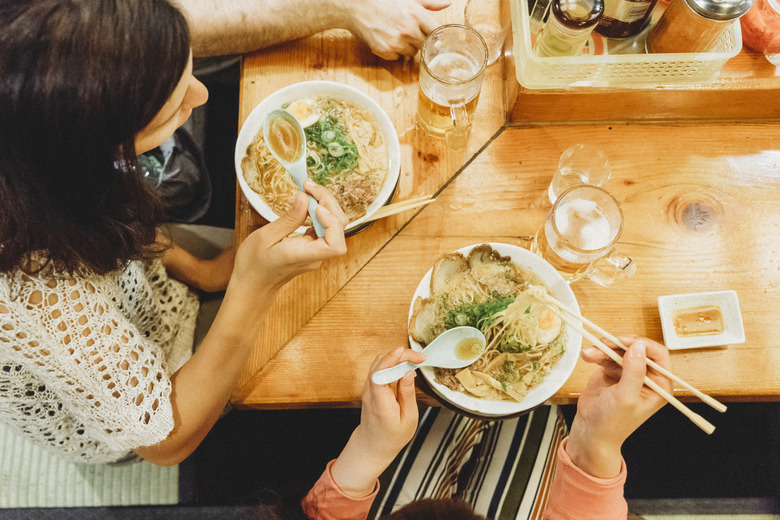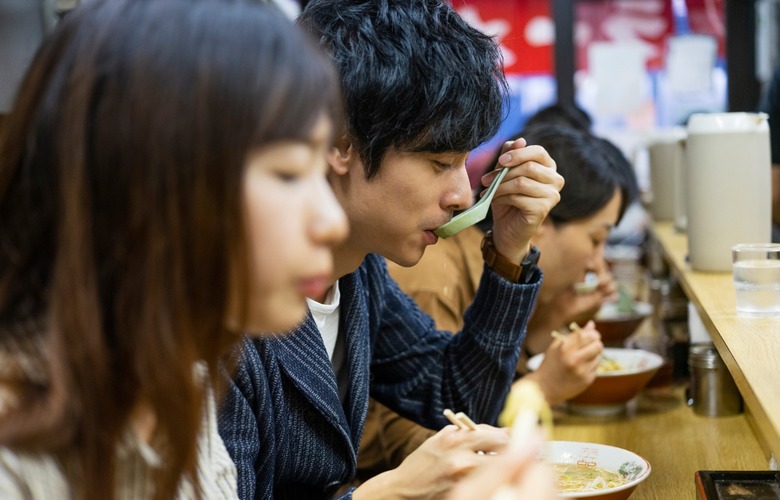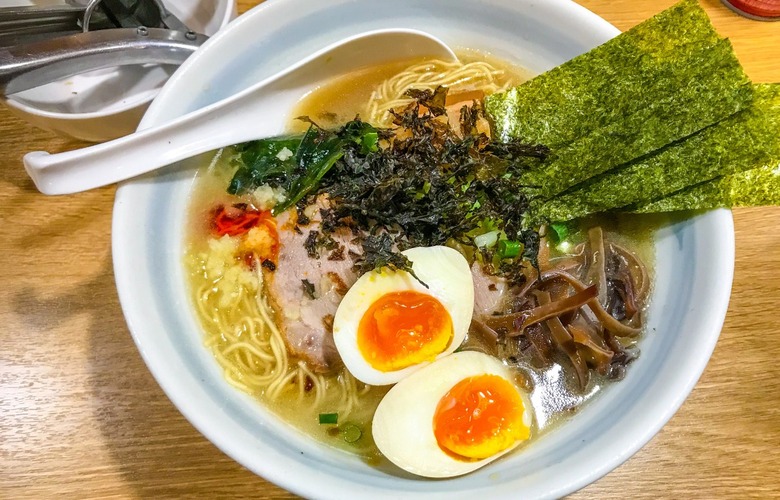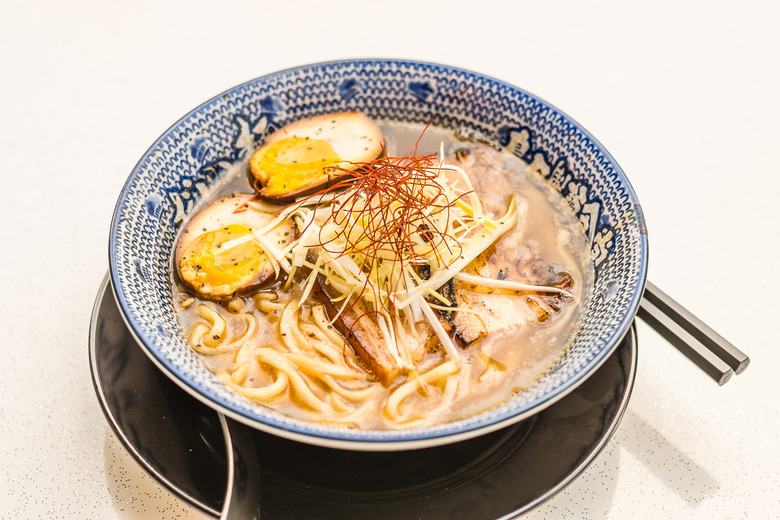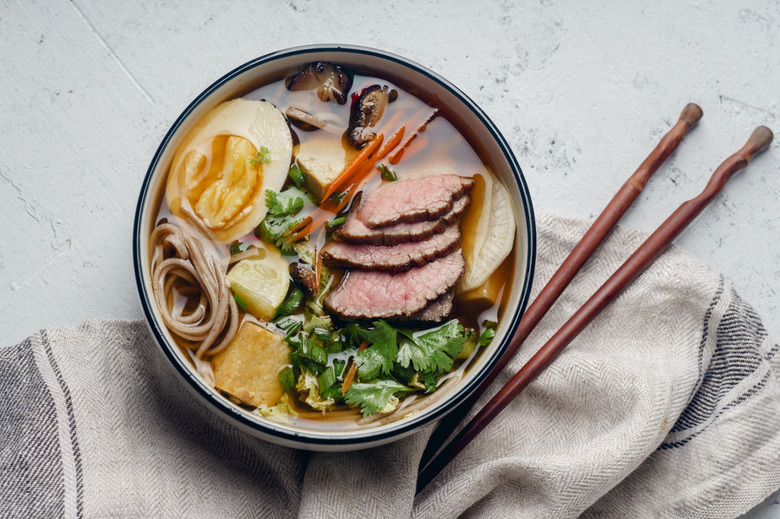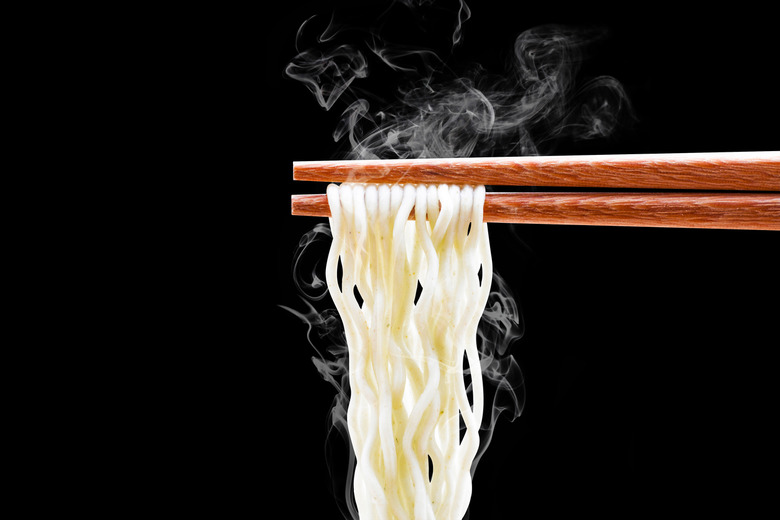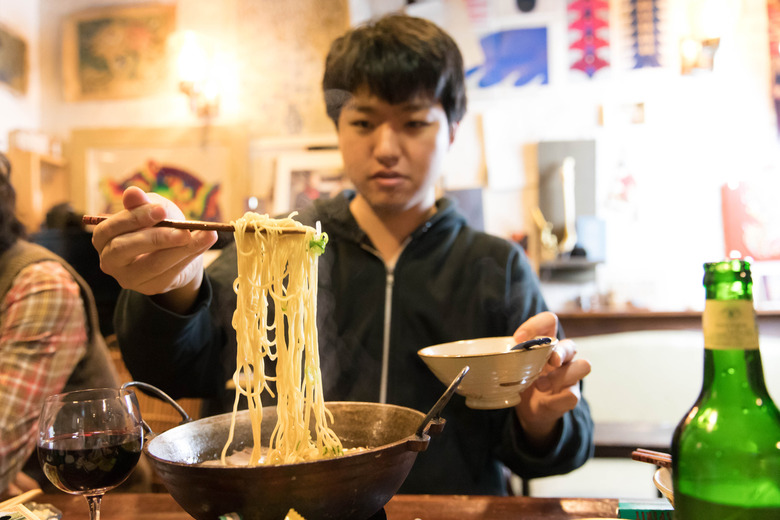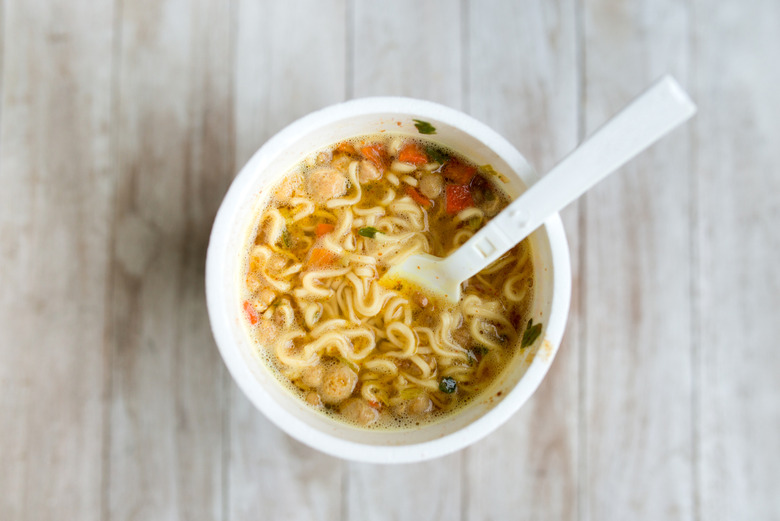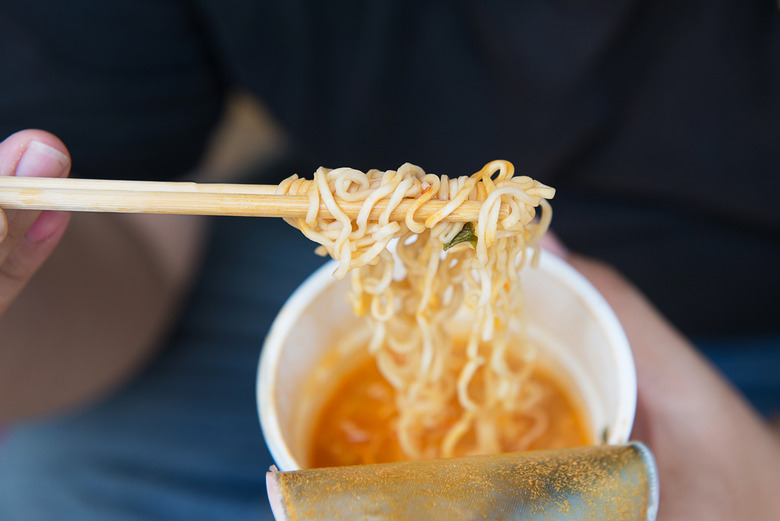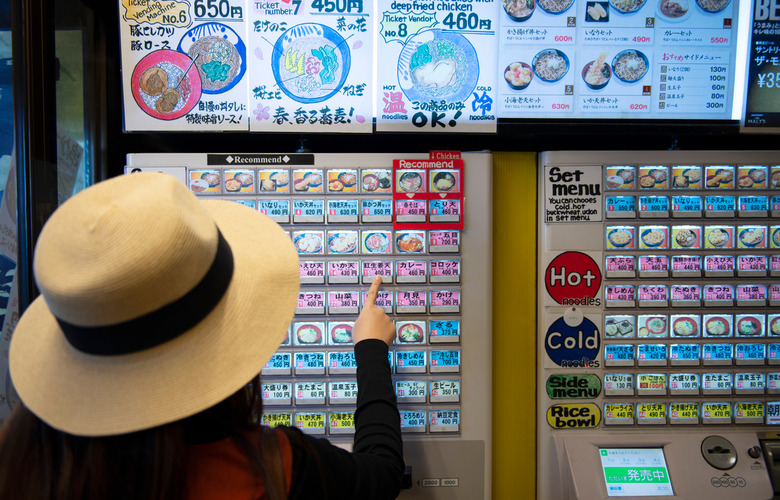10 Things You Didn't Know About Ramen
Seemingly every culture has its big bowl of noodles, and in Japan, the complex and comforting ramen is king. But even if your college obsession with Cup Noodles has given way to weekly jaunts to the hot new ramen spot in town, we bet there's a lot you didn't know about this salty, umami-kicked soup.
Ramen starts with noodles, which are added to a rich and flavorful stock. The most common ramen styles are tonkotsu (rich, creamy, and made from pork bones), shoyu (soy sauce), shio (salt), and miso, made with miso paste and chicken, pork, seafood, or vegetable broth. These broths typically boil away for hours, developing a rich flavor and texture that only time can create. Recipes are usually closely guarded, but just about all of them also contain kombu (kelp), mushrooms, and onions. Finally, toppings usually include a slab of roast pork called chashu, a soft-boiled egg, sprouts, scallions, dried seaweed, and fermented bamboo shoots, called menma.When you hear the word "ramen," what's the first thing that comes to mind? If you're like most of us, it's probably a polystyrene cup filled with the sodium-laden instant noodles that you ate way too much of back in college. But over the past few years, there's been a revolution, and real ramen — big steaming bowls of impossibly rich broth, springy noodles, and countless add-ins — has finally made its way across the Pacific in a big way.
So whether your knowledge of all things ramen starts and ends with instant noodles or no weekend is complete without checking out your city's newest ramen hotspots, read on to learn 10 things about ramen.
It Most Likely Originated in China, Not Japan
It is widely believed that ramen noodles first made their way to Japan during the Meiji period (1868-1912). In fact, the word "ramen" is the Japanese pronunciation of a type of Chinese noodle, lamian. Before the 1950s, ramen in Japan was called simply "shina soba," or "Chinese soba."
Each Japanese Region Has a Signature Style
Some examples include Sapporo-style ramen (miso ramen with roast pork, bamboo shoots, and scallions), Tokyo ramen (a seafood-heavy shoyu broth with roast pork, minced pork, fish cake, and spinach), Kyoto-style (pork and chicken-based broth with roast pork, bamboo, scallions, and nori), and Hakata (tonkotsu with roast pork, scallions, nori, and a wide variety of optional add-ins).
They’re Designed to Have as Much Umami as Possible
If ramen really "hits the spot," it's because it's absolutely packed with that savory, meaty "fifth taste" called umami. Umami-rich kombu (kelp) (which is loaded with glutamates) is an essential part of the stock, which can also be packed with umami bombs like soy sauce, katsuobushi (dried tuna flakes), niboshi (dried baby sardines), and mushrooms.
The Topping Possibilities Are Endless
While you'll almost always encounter roast pork, processed fish cake, bean sprouts, seaweed, egg, and bamboo as topping options, depending on the region and shop, you can also find add-ins including corn, butter, fried chicken, chicken meatballs, pickled plums, garlic, sesame seeds, leeks, cabbage, or any of a seemingly infinite array of toppings.
A Secret Ingredient Makes the Noodles Extra-Firm
Ever wonder why the noodles in ramen don't turn to mush, like the noodles in chicken noodle soup do? It's because they contain what's called kansui, an alkaline mineral water usually containing sodium carbonate, potassium carbonate, and phosphoric acid. This makes them slightly yellow, gives them a firm and chewy texture, and prevents them from absorbing too much stock and turning to mush.
World War II Revolutionized the Ramen World
Ramen didn't really catch on throughout Japan until after World War II, when a couple things happened: One, the Japanese market was flooded with cheap flour from the United States, making noodles much easier to come by; and two, Japanese troops developed a taste for noodles while in China and set up Chinese restaurants and noodle shops back in Japan. The Japanese quickly seized on the ramen movement and made it their own.
Instant Ramen Was Named the Greatest Japanese Invention of the 20th Century
Instant ramen was invented by Momofuku Ando in 1958, and was a massive success, allowing anyone to make a semi-reasonable facsimile of actual ramen by just adding water. In 2000, the Fuji Research Institute conducted a survey of Japanese people asking them what they felt their greatest export of the twentieth century was, and surprisingly, it wasn't the Walkman or Nintendo that topped the list — it was instant ramen noodles. Coming in second? Karaoke.
There’s a Ramen Museum in Yokohama
The food-themed amusement park, which opened in 1994, includes a massive recreation of Tokyo circa 1958 (the year instant noodles were invented), and is full of ramen stands representing the country's most famous ramen shops. There's also an old-style bar, snack shops, and a souvenir shop.
Eating Too Much Instant Ramen Can Kill You
A 2014 study published in the Journal of Nutrition found that eating instant noodles two or more times per week increases the risk of developing heart disease and conditions including diabetes and stroke, especially in women. This is because instant ramen is highly processed and is very high in calories and sodium. And to add insult to injury, some Styrofoam packaging contains BPA, which can interfere with hormones.
There Are Ramen Vending Machines in Tokyo
In the Akihabara district of Tokyo, a popular ramen restaurant has set up vending machines that dispense warm ramen in a can (caked ramen kan). Available in several flavors including tonkotsu and curry, each can includes soup, noodles, bamboo, and pork, and comes with a small plastic fork. Clearly, ramen is just as iconic in Japan as these dishes are in America!
More From The Daily Meal:
The Best Restaurant for Breakfast in Every State
The Best Mexican Restaurant in Every State
The Best Chinese Restaurant in Every State
